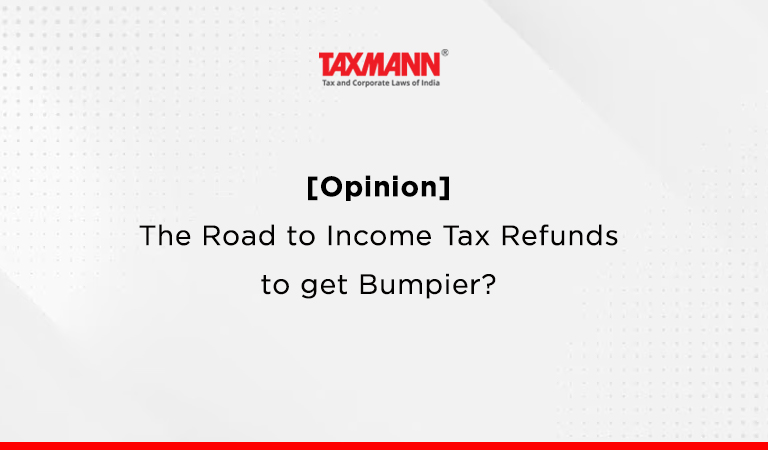[Opinion] The Road to Income Tax Refunds to get Bumpier?
- Blog|News|Income Tax|
- 2 Min Read
- By Taxmann
- |
- Last Updated on 1 March, 2023
Jatin Kanabar & Srinath Kumar – [2023] 147 taxmann.com 589 (Article)
Getting income tax refunds on time is something most assessees look forward to. In case of large MNEs, refunds may arise on account of factors such as high TDS deduction or those arising post appeal proceedings. The assessees would rather deploy these funds in its business which gives higher returns than the interest earned on tax refunds. However, more often than not, getting refunds, which are rightfully due to assessees, does not typically happen in time. Often, it is observed that there is a communication gap between the jurisdictional Assessing Officer (AO) and Centeralised Processing Center (CPC) which delays the refunds or the CPC ends up adjusting refunds against demands which shouldn’t have been adjusted.
Compounding the extant situation further, a proposed amendment in the Finance Bill of 2023 could make the process of getting refunds even more difficult.
Ordinarily, once income tax returns are filed, CPC of the income tax department processes the returns in a prescribed manner. Amongst the series of checks and steps, one step is to determine the income tax refunds and grant the same to the assessees. The income tax department carefully monitors this, and rightfully so as refunds directly impact the government treasury and estimates. As per the latest press release of the Ministry of Finance, income tax refunds amounting to Rs. 2.69 lakh crore have been issued during 1st April, 2022 to 10th February 2023, which is 61.58% higher than that issued during the same period last year.
Here it will be useful to understand how the law has undergone change with regard to processing of returns and issuance of refund. The Finance Bill 2017 (with effect from AY 2017-18), introduced a new provision with regard to issuance of refund post processing of returns by CPC (section 241A). This provision replaced the earlier law under which returns were not required to be processed in cases selected for income tax scrutiny and refunds were processed only on completion of assessment. As per section 241A, post processing of income tax returns by CPC, where a refund is determined, the AO is given powers to withhold the refund with prior approval of Principal Commissioner or Commissioner, in case he is of the opinion that grant of refund may adversely affect the recovery of Revenue.
Click Here To Read The Full Article
Disclaimer: The content/information published on the website is only for general information of the user and shall not be construed as legal advice. While the Taxmann has exercised reasonable efforts to ensure the veracity of information/content published, Taxmann shall be under no liability in any manner whatsoever for incorrect information, if any.

Taxmann Publications has a dedicated in-house Research & Editorial Team. This team consists of a team of Chartered Accountants, Company Secretaries, and Lawyers. This team works under the guidance and supervision of editor-in-chief Mr Rakesh Bhargava.
The Research and Editorial Team is responsible for developing reliable and accurate content for the readers. The team follows the six-sigma approach to achieve the benchmark of zero error in its publications and research platforms. The team ensures that the following publication guidelines are thoroughly followed while developing the content:
- The statutory material is obtained only from the authorized and reliable sources
- All the latest developments in the judicial and legislative fields are covered
- Prepare the analytical write-ups on current, controversial, and important issues to help the readers to understand the concept and its implications
- Every content published by Taxmann is complete, accurate and lucid
- All evidence-based statements are supported with proper reference to Section, Circular No., Notification No. or citations
- The golden rules of grammar, style and consistency are thoroughly followed
- Font and size that’s easy to read and remain consistent across all imprint and digital publications are applied








 CA | CS | CMA
CA | CS | CMA


